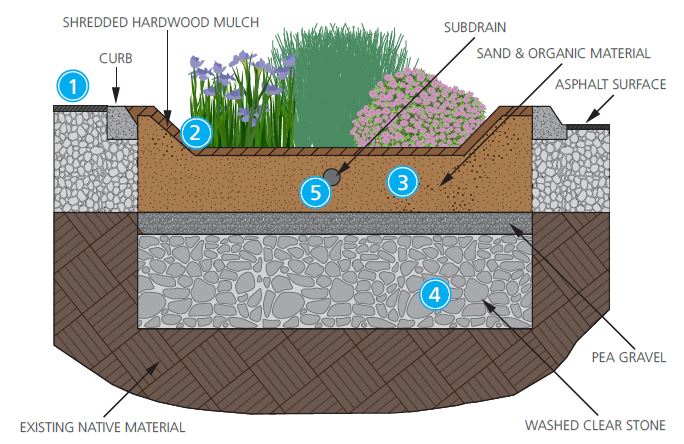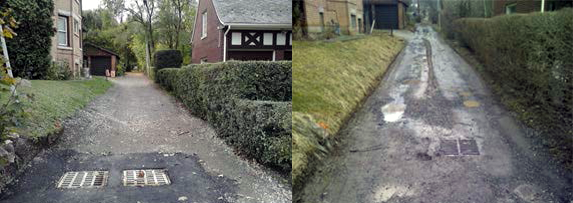Low Impact Development
Low Impact Development or LID is an innovative approach to land development that mimics the natural movement of water in order to manage stormwater (rainwater and urban runoff) close to where the rain falls. LID uses small, simple design techniques and landscape features that filter, infiltrate, store, evaporate, and detain rainwater and runoffs at the lot level. LID benefits could include:
- Stormwater volume control
- Flood reduction
- Water quality protection and improvement
- Infrastructure savings
- Improved tourism and recreation opportunities
- Increased public health, livability, walk friendly communities
- Increased property values
- Reduced urban heat island effects
- Climate change adaptation
LID Best Practices
The most commonly adopted stormwater LID practices include the following:
- Bio-retention/Rain Gardens
- Permeable Pavements
- Soakaways, Infiltration Trenches and Chambers
- Green Roofs
- Rainwater Harvesting
- Enhanced Grass Swales
- Dry Swales/Bio-swales
- Perforated Pipe Systems
- Vegetation Filter Strips
- Downspout Disconnection/Absorbent Landscaping
Examples of LID Projects in Hamilton
LID practices have been gradually adopted in the City of Hamilton to deal with stormwater management issues, most of which are within the City’s parks, road right-of-ways and some private land developments. Here are a few of the LID projects the City of Hamilton has undertaken.
Rain Gardens in the Right of Way
Bay Street North and Simcoe Street West Traffic Calming LID Bump-out
As part of the North End Traffic Master Plan, the City will be constructing a Low Impact Development (LID) Rain Garden Traffic Calming Bump-out at the intersection of Bay Street North and Simcoe Street during the summer/fall of 2017. It is designed to capture, clean and absorb stormwater runoff while reducing flooding.
- Rain water runoff is collected from paved and other hard surfaces (driveways, roadways, roofs) and directed into this garden.
- Mulch and plants absorb water and nutrients from the stormwater and provide beautiful habitat for native birds and insects.
- Water slowly seeps through a special mixture of sand and organic material that absorbs and filters out pollutants.
- The gravel layer below the soil stores the clean stormwater and allows this water to filter into the ground to recharge the groundwater.
- Treated stormwater that does not filter into the ground is drained into the storm sewer through a subdrain.

Plant Selection
This rain garden contains a mix of perennials and grasses designed to tolerate spring flooding, summer drought and winter salt. The plants selected offer year-round beauty and colour while attracting pollinators and benefit local biodiversity. The plants used in this garden include Blue Flag Iris, Heavy Metal Switch Grass and Purple Dome Aster.
Trench Drains
Hillcrest Alleyway
Hillcrest Alleyway runs between Hillcrest Avenue and South Street, parallel to Dundurn Street South to the west and Beulah Avenue to the east. This site suffered from poor drainage, surface ponding and safety issues associated with winter icing, which required frequent visits from city staff to manage the ice accumulation. To remedy the situation, the City of Hamilton retained a consultant to design a Low Impact Development (LID) based approach to not only fix the ponding issue but to reduce runoff volumes to the combined sewer system and improve runoff quality.

The preferred LID design was an alleyway infiltration trench which included the excavation of approximately 75 metres of alleyway for the installation of an infiltration trench and orifice connection to the local storm sewer.
Locations of other trench drains:
- Dundas Driving Park
- Seabreeze Park
- Winona Park
- Willam Connell Park
Pervious Pavers and Pavements
- Hixon Park
- Courtcliffe Park
Storm Chamber
- Gage Park
Soak Away Pits
- Jimmy Lomax Park
- Skyway Park
- Jackson Heights
Bioswales
- Courtcliffe Park
- Pier 8

Pervious Pavement

Underground Storm Chamber
